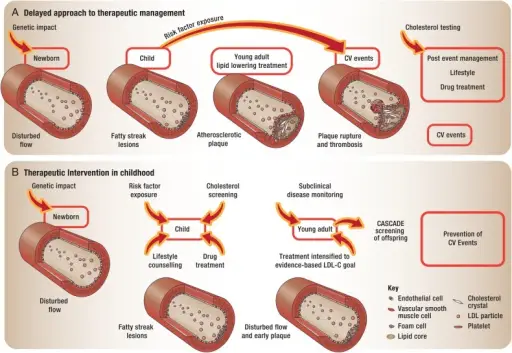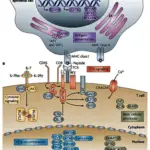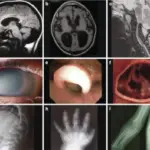Familial hypercholesterolemia is a genetic disorder characterized by high cholesterol levelswhich include very high levels of low-density lipoprotein in the blood and early cardiovascular disease.
What is the Pathology of Familial Hypercholesterolemia?
The pathology of familial hypercholesterolemia is:
-Etiology: The cause of familial hypercholesterolemia is mutation in the gene encoding the receptor for LDL.
-Genes involved: the most common genetic defects are LDLR mutations, ApoB mutations, PCSK9 mutations and LDLRAP1.
-Pathogenesis: The sequence of events that lead to Familial Hypercholesterolemia: LDL receptor function is reduced or absent.
How does Familial Hypercholesterolemia Present?
Patients with familial hypercholesterolemia typically either male or female present early in life. The symptoms, features, and clinical findings associated with familial hypercholesterolemia include yellow deposits of cholesterol-rich fat, xanthelasma palpebrarum, xanthoma, and cardiovascular disease.
How is Familial Hypercholesterolemia Diagnosed?
Familial Hypercholesterolemia is diagnosed by physical exams, personal or family history of hypercholesterolemia, early‐onset ASCVD, and the concentration of circulating LDL‐C.
How is Familial Hypercholesterolemia Treated?
Familial hypercholesterolemia is treated with statins, bile acid sequestrants, or other lipid-lowering agents. LDL apheresis may also be considered.
What is the Prognosis of Familial Hypercholesterolemia?
The prognosis of familial hypercholesterolemia is dependent on how closely an individual follows the lifestyle and diet recommendations.



